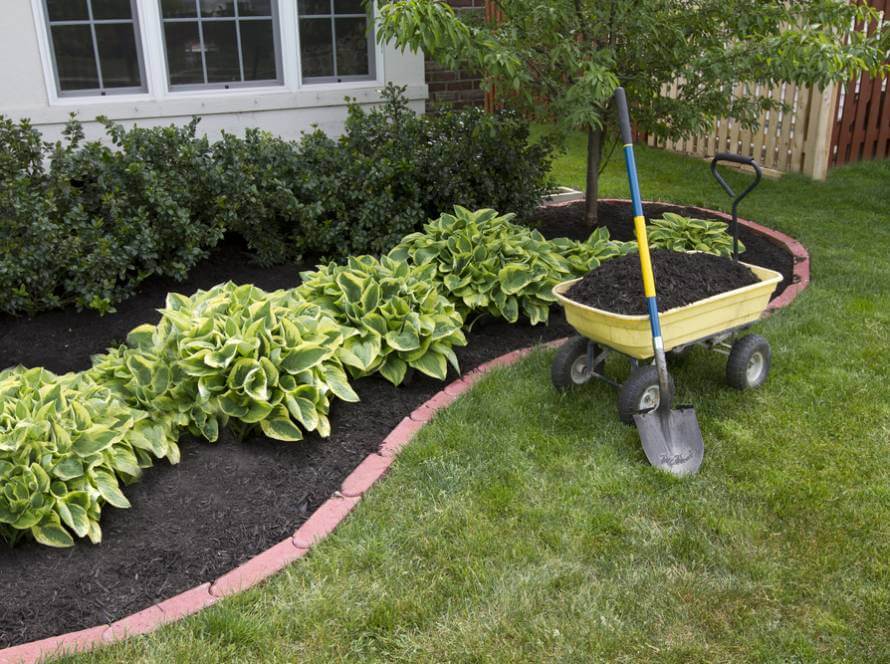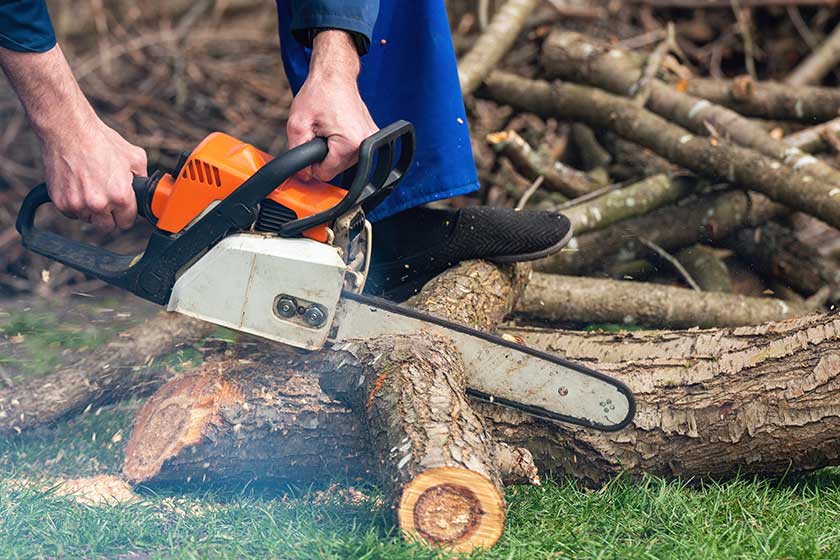Maintaining a lush, healthy lawn is more than just a way to beautify your home—it is an investment in your property’s value and in the environment. A well-kept lawn not only offers a pleasing aesthetic but also provides a natural cooling effect, helps in carbon dioxide absorption, and prevents soil erosion.
For many homeowners, however, lawn care can seem daunting. The good news is that effective lawn maintenance does not require you to be an expert gardener. Knowing a few foundational practices and the reasons behind them, you can keep your lawn looking its best through all seasons.
Understanding Lawn Maintenance
- What is Lawn Maintenance?
Full lawn maintenance involves a variety of practices aimed at keeping your lawn healthy, vibrant, and free of pests and diseases. At its core, it includes regular mowing, watering, fertilizing, and controlling weeds and pests. Each of these activities is crucial in its own right and contributes to the overall resilience and beauty of your lawn.
- Why is it Important?
The benefits of maintaining a well-kept lawn extend beyond the obvious visual appeal. A healthy lawn acts as a natural air conditioner for your environment, significantly cooling your property during warmer months. It also plays a vital role in the ecosystem, bringing oxygen while capturing dust and pollutants. Moreover, a robust lawn prevents soil erosion by rain or wind, protecting the soil’s fertility and your landscape’s structure.
Essential Lawn Care Techniques
Watering Wisely
Water is the lifeblood of any lawn, but knowing how much to water and when is essential for healthy grass. Overwatering can be just as detrimental as under-watering, leading to shallow root systems and increasing the susceptibility of your lawn to diseases and pests.
When to Water
The best time to water your lawn is in the early morning, typically before 10 AM. This timing allows the water to soak deep into the soil, reaching the roots while minimizing evaporation.
How Much to Water
Generally, lawns require about 1 to 1.5 inches of water per week, either from rainfall or watering. The amount can vary depending on your soil type and the grass species. To check if your lawn needs watering, step on the grass; if it does not spring back quickly, it is time to water.
Techniques for Efficient Watering
Instead of frequent light sprinklings, opt for less frequent but deep watering sessions. Deep watering encourages roots to grow deeper into the soil, making them more resilient and drought-tolerant. Employing a rain gauge can help you keep track of how much water your lawn is receiving and adjust accordingly.
Mowing Correctly
Proper mowing is more than just cutting your lawn to the right height; it is also about understanding the best practices to promote healthy grass growth.
- Right Height – It is needed to avoid cutting more than one-third of the grass blade length during a single mowing. Mowing the grass too short can stress the turf, which increases its vulnerability to diseases, pests, and invasive weeds.
- Mower Maintenance – Keeping your mower blades sharp is critical. Dull blades tear the grass rather than cutting it cleanly, which can lead to disease and pest infestations.
- Mowing Frequency – Adjust your mowing frequency according to the growth rate of the grass. During peak growing seasons, you might need to mow more frequently, while growth may slow down at other times of the year.
Nutrient Management
Ensuring your lawn has the necessary nutrients is crucial for its health and vitality. The process begins with an often-neglected but significant step: conducting a soil test. A test is essential as it uncovers any deficiencies in nutrients, pH imbalances, and other factors that might be restricting your lawn’s growth. With these insights, you can customize your fertilization practices to match the unique needs of your soil and type of grass, fostering optimal growth and greenness.
When it comes to fertilizing, selecting the right type of fertilizer is paramount. It is vital to choose products that align with the specific nutrient requirements identified in your soil test. Organic fertilizers, such as compost or manure, are highly beneficial choices.
They not only deliver essential nutrients but also enhance the soil’s structure. The improvement in soil structure facilitates better root growth and water infiltration, which are key to maintaining a healthy lawn. By following a tailored nutrient management plan, you make sure that your lawn receives exactly what it needs to thrive, reducing the risk of over-fertilization and its associated problems.
Weed and Pest Control
Weeds and pests can be a major nuisance in any lawn, competing with grass for nutrients and space while detracting from the lawn’s aesthetic. Effective control starts with prevention and integrates several practices to keep these unwanted guests at bay.
- Integrated Pest Management (IPM)
IPM is a holistic strategy that employs a combination of biological, cultural, physical, and chemical methods to control pest populations effectively. Such approach is designed to minimize the risks to economic stability, human health, and the environment. Integrating various management techniques reduces the reliance on chemical pesticides, promoting a healthier and more sustainable way to handle pest issues.
- Natural Remedies
Before resorting to chemicals, consider natural options. Corn gluten meal, for example, is a natural pre-emergent herbicide and fertilizer that can help prevent weeds without harming your grass. For pests, encouraging natural predators like birds or beneficial insects can help keep the pest population under control.
- Spot Treatment
When chemical intervention is necessary, opt for spot treatments rather than blanket applications. It reduces the amount of chemicals used and limits their impact on the environment.
Fighting Lawn Diseases
Lawn diseases can be disheartening after all the hard work you put into your yard. However, most common lawn diseases can be prevented with proper care and timely action.
- Identify and Act: Learn to recognize the early signs of disease, typically manifested as discolored patches or unusual spotting on leaves. Early detection makes treatment more effective and often less invasive.
- Cultural Practices: Many diseases are exacerbated by excess moisture on the blades or roots. Guarantee your lawn has adequate drainage and avoid watering in the evening to minimize overnight moisture.
- Fungicides: In cases where diseases have taken hold, fungicides can be necessary. As with pesticides, choose products that target the specific disease you are dealing with and follow the instructions precisely to avoid harming your grass.
Aerating and De-thatching
Compacted soil and thick thatch layers can hinder the health of your lawn through blocking essential nutrients, water, and air from reaching the root zone. Aerating and de-thatching are critical processes that help maintain the soil’s health and your lawn’s vigor.
- Aerating: It involves making small holes in the lawn to allow air, water, and nutrients to penetrate the soil. Aerating is especially beneficial for lawns subjected to heavy foot traffic or grown in clay-heavy soils. It is best performed during the growth periods of spring or fall.
- De-thatching: Thatch is a layer of dead grass and organic matter that accumulates on the soil’s surface. A thin layer is beneficial, but when it exceeds half an inch, it can cause problems. De-thatching removes this layer, promoting healthier lawn growth.
Seasonal Lawn Care Tips
Each season brings different challenges and opportunities for lawn care. Adjusting your maintenance routine to the changing weather conditions can make a significant difference in the health and appearance of your lawn.
- Spring: This is the time for rejuvenation. Begin with a thorough cleaning, removing any debris accumulated over the winter. It is also the ideal time to overseed any bare patches, apply a balanced fertilizer, and start your regular mowing as the grass begins its active growth.
- Summer: Focus on maintaining soil moisture and protecting the lawn from heat stress. Water deeply and less frequently, mow at a slightly higher height to shade the soil, and apply a light layer of organic mulch to conserve moisture.
- Fall: Prepare your lawn for winter by continuing to water and mow as needed. A late fall fertilizer application can help strengthen roots and prepare the grass for the cold months ahead.
- Winter: While growth slows down, it is important to minimize foot traffic on frozen grass to prevent damage. It is also a good time to service your lawn care equipment and plan any improvements for the upcoming season.
Lawn Renovation Techniques
Sometimes, despite your best efforts, a lawn might become too worn or damaged to recover through regular maintenance alone. In such cases, lawn renovation may be necessary. The process can vary in intensity, from simple overseeding to complete lawn reconstruction depending on the extent of the damage.
- Overseeding
This is one of the simplest ways to rejuvenate an aging lawn. Overseeding involves spreading new grass seeds over the existing turf. It is particularly effective in filling in bare spots, improving lawn density, and enhancing its color.
- Topdressing
Applying a thin layer of soil or compost over your lawn can improve soil health, helping to reduce lawn thatch and improve drainage and drought resistance.
- Complete Renovation
For lawns that are extensively damaged, stripping the old turf and starting anew might be the best option. Such a process involves removing the existing grass, regarding the soil if necessary, and either seeding or installing sod.
Eco-Friendly Lawn Care
As environmental concerns continue to grow, many homeowners are looking for ways to maintain their lawns in an eco-friendly manner. Sustainable lawn care practices not only help reduce your environmental footprint but can also lead to a healthier, more resilient yard.
- Native Grasses: Opting for grass types native to your region can drastically reduce the need for water, fertilizers, and pesticides. Native grasses are adapted to local conditions and tend to be more disease and pest-resistant.
- Organic Products: Using organic fertilizers and pest control products minimizes the introduction of harmful chemicals into the environment. These products are derived from natural sources and are often just as effective as their chemical counterparts.
- Water Conservation: Installing a smart irrigation system can help reduce water usage by adjusting watering schedules based on weather conditions and soil moisture levels. Such systems confirm that your lawn receives the right amount of water without waste.
Professional Lawn Care Services
While many homeowners enjoy the process of caring for their lawns, others may prefer to seek professional help. Professional lawn care services can offer a hassle-free way to maintain a beautiful yard. They have the expertise and equipment to handle everything from routine maintenance to more complex problems such as pest infestations or disease management.
- Expert Assessment: Professionals can provide a detailed assessment of your lawn’s condition and tailor a care plan to suit its specific needs.
- Time-Saving: Hiring a professional service saves time and effort, especially for those with busy schedules or large properties.
- Advanced Techniques: Lawn care professionals have access to advanced tools and techniques that may not be feasible for the average homeowner to invest in.
Achieving a well-maintained lawn is a combination of dedication, knowledge, and regular care. By knowing the basic principles of lawn maintenance and adapting them to the specific needs of your landscape, you can ensure that your lawn remains a beautiful and functional part of your home environment.
Maintaining a healthy and aesthetically pleasing lawn requires a comprehensive approach that includes proper watering, mowing, nutrient management, and pest control. Seasonal care and occasional renovation may also be necessary to address specific issues or improve the overall health of the lawn.
For those seeking expert assistance with comprehensive lawn care solutions, whether it is lawn maintenance, lawn aeration, or lawn partnering a dedicated provider like Covenant Landscapes can make sure that your lawn not only survives but thrives. Our commitment to sustainable practices and customer satisfaction underscores our promise to help you achieve a lawn that enhances both your home and your quality of life.



